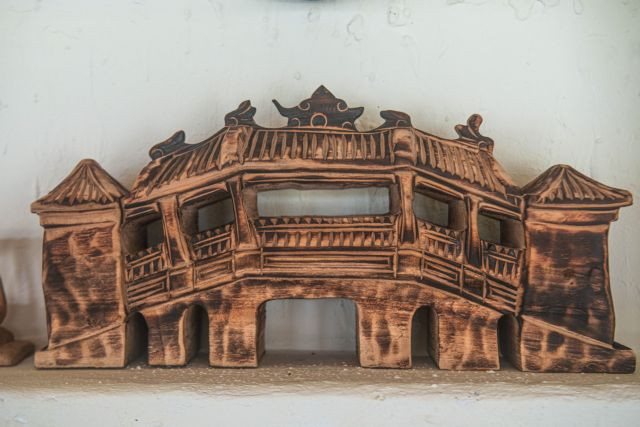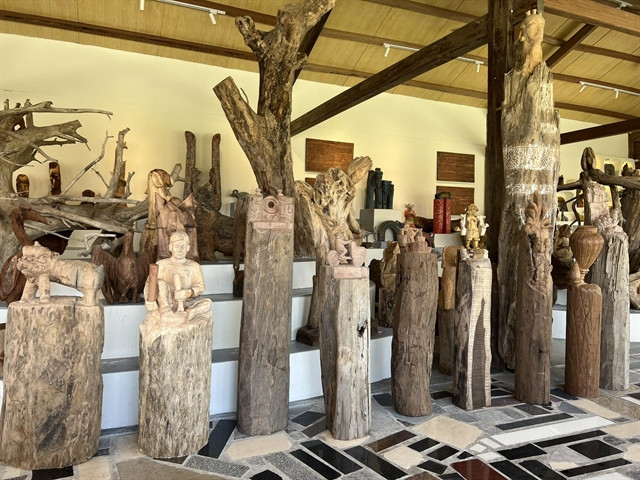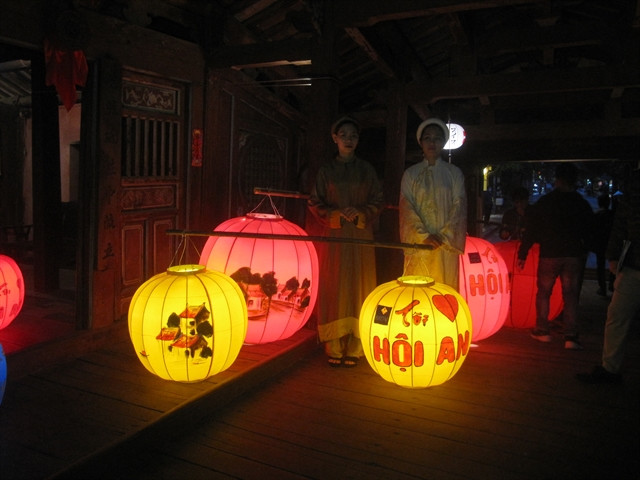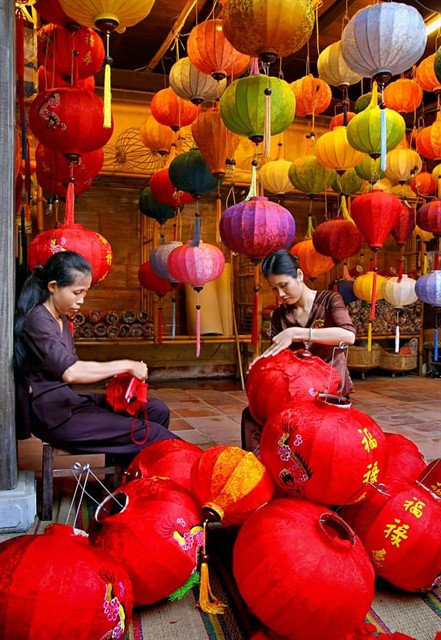 |
| A sculpture of the Japanese Bridge is created from driftwood. A 20-driftwood sculpture collection of Hội An will be installed at the Hội An Garden in Wernigerode, Germany during August 24-27. Photo courtesy of Lê Ngọc Thuân |
Director of the city’s Information and Sports Centre Trương Thị Ngọc Cẩm said the festival will be an annual cultural exchange programme of the two cities, and it aims to introduce the traditional culture, crafts, art performances, eco-tourism and heritage of Hội An in Germany.
This year will mark the 10th anniversary of the friendship of the two cities (2013-2023) and promote ‘green’ growth co-operation by decorating lanterns in the streets of Wernigerode, art performances, a lantern-making skills demonstration, calligraphy and other hand-made trades of Hội An.
The Hội An Garden is built at the Miniaturen Park ‘Kleiner Harz’ in Wernigerode, while an eco-road or ‘green canopy’ street will be developed in Hai Bà Trưng Street in Hội An for the occasion.
Lê Ngọc Thuận, the founder of driftwood village studio in Hội An, said the 20-piece firewood sculpture collection, which was chosen from more than 100 sculptures, had been transformed from firewood and debris into stunning sculptures and interior decorations by carpenters of Kim Bồng carpentry village in Hội An.
 |
| Different pieces of firewood and debris are turned into sculptures of animals, men and women, and interior decorations at the driftwood studios in Hội An. Photo courtesy of Coco Casa |
He said the sculpture collection features the traditional craft skills of Hội An, while boosting innovation and recycling to protect the environment for sustainable development.
Thuận said the studio, the first firewood recycling space in Hội An, in Cẩm Hà Commune, has been a rendezvous for tourists and sculpture lovers.
Most of the sculpture pieces were created from wood that had drifted onto Cửa Đại Beach during the annual flood, and include sculptures of cats, buffalo, and the Japanese Bridge – an iconic symbol of Hội An – or Cơ Tu ethnic group designs, he added.
Cultural exchange events have been organised in both cities as part of annual co-operation programmes. In 2019, Hội An artisans also joined the ‘lantern night’ festival in the old streets of Wernigerode, while the German Beer festival was held in Hội An.
The German city helped develop a solar-powered system for public lighting, loudspeakers and lanterns in Hội An in 2018, before sending a donation of 23,600 euros (VNĐ651 million, or more than US$23,000) to support flood and storm victims in Hội An.
 |
| Tourists enjoy photo taking with lanterns in Hội An. The lantern festival of Hội An will be held in Wernigerode, Germany as part of co-operation and culture exchange programmes of Hội An and Wernigerode. VNS Photo Công Thành |
Hội An – the UNESCO-recognised World Heritage Site – has been building a dossier for recognition from the UNESCO’s Creative Cities Network (UCCN).
The tourism hub in central Việt Nam had been using straws, containers and souvenirs from bamboo and reeds, and promoting the use of reusable bags and the 'Say No to Single-Use Plastics' campaign.
Hội An and Wernigerode were recognised with a German Sustainability Award 2019 by the German Federal Government.
The ancient town, which had launched the ‘Establishing Comprehensive Bicycle Plan and Free/Low-cost Bicycle Sharing Programme project' proposed by HeathBridge Việt Nam with funding from the German development agency (GIZ), received the Global Urban Mobility Challenge Award of the Transformative Urban Mobility Initiative in Leipzig, Germany.
It also plans to provide 100,000 bicycles for residents in order to become the first eco-city in Việt Nam.
 |
| Craftswomen making lanterns in Hội An ancient town. Lanterns are one of various traditional handmade trades of Hội An. Photo courtesy of Hội An City's Culture and Sports Centre |
Hội An was chosen for the 2013 Townscape Award by the UN-Habitat Regional Office in Asia, while the city’s Hoài River and its canals featured in the list of the 10 most-famous canals in the world by the US-based travel website www.touropia.com in 2014.
Covering an area of 60sq.km, the tourist hub now has 22.5sq.km covered with farms and forests and 11sq.km filled with lakes and canals. — VNS